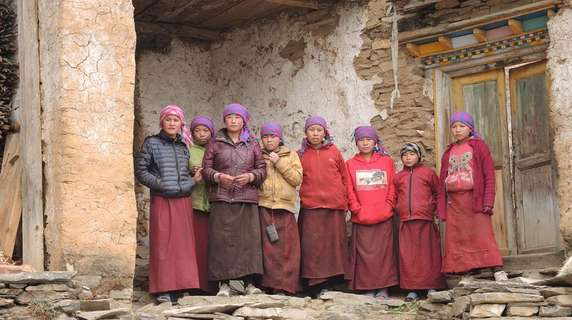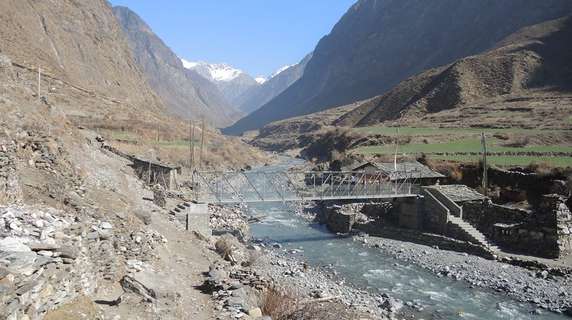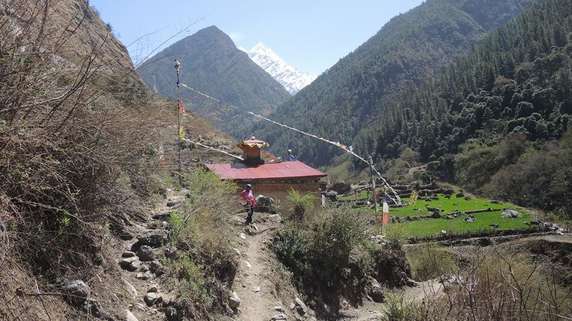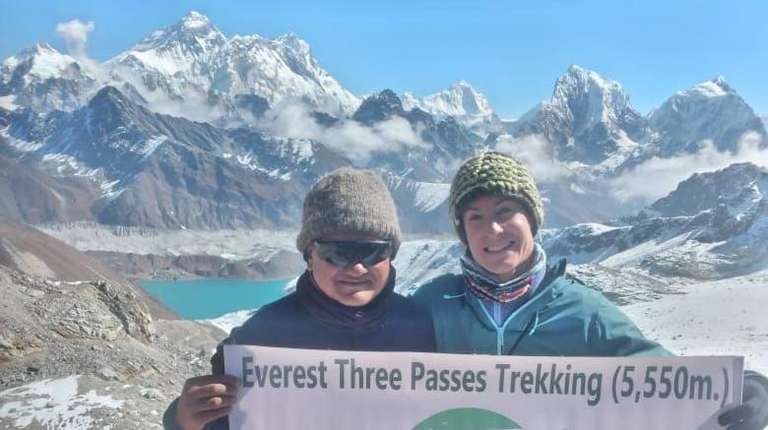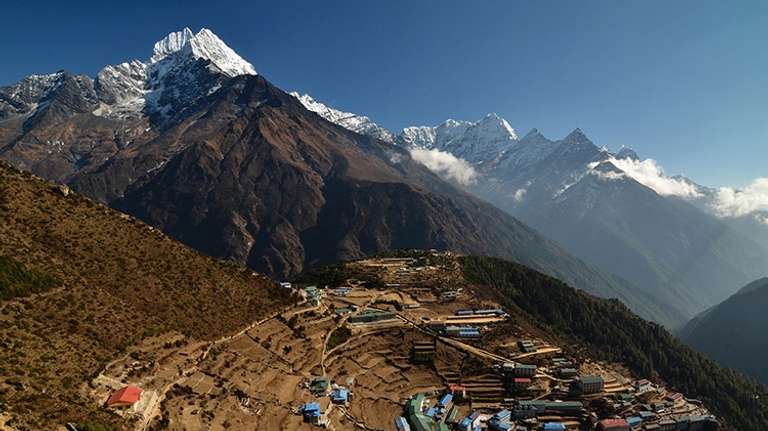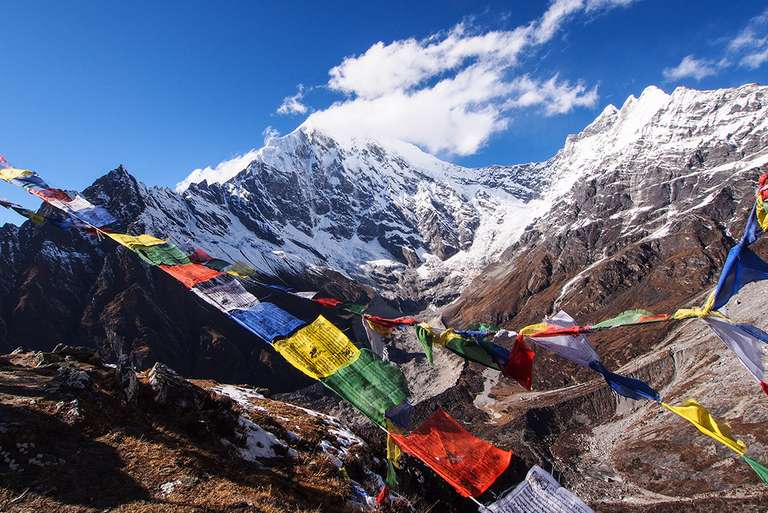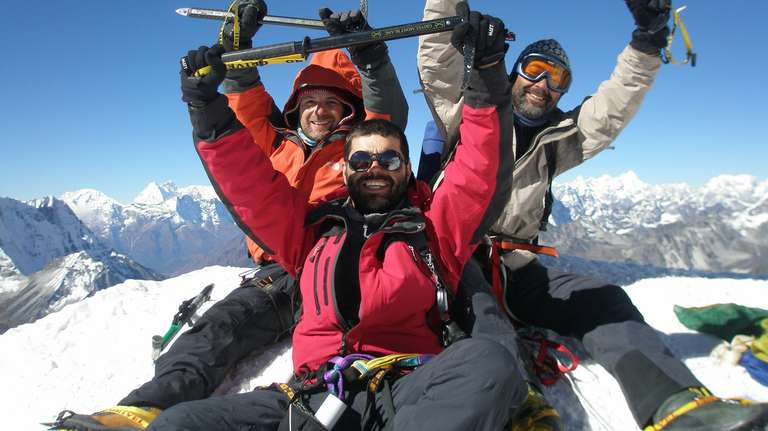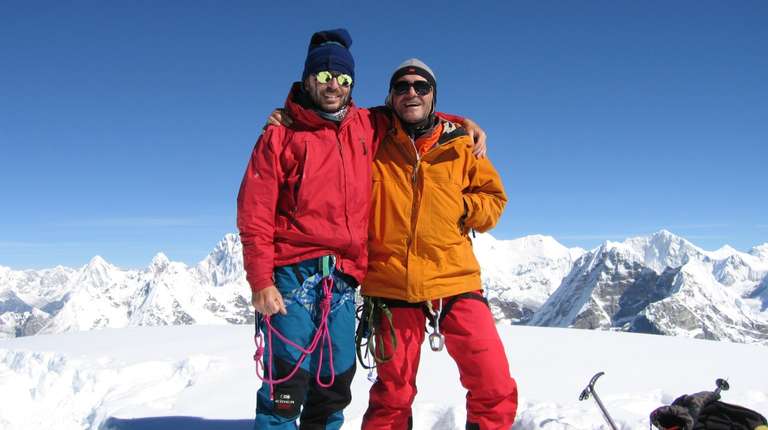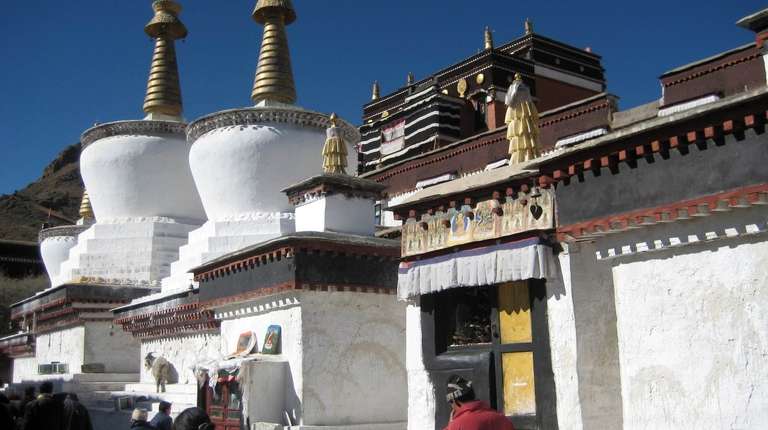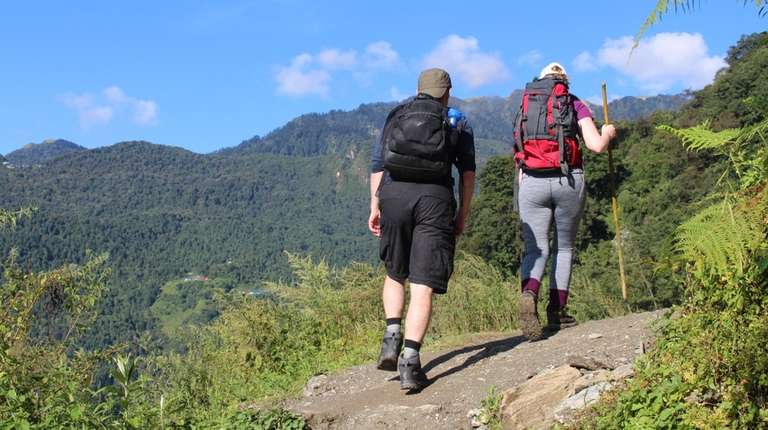Highlights
Experience an exciting climb to Shyala for a panoramic view of Himalchuli
Witness scenic views of Tibet and explore Tibetan monasteries
Become familiar with the unique, multiethnic villagers of this remote region
Cross an exciting local bamboo bridge
Itinerary
The Manaslu Trek is a haven for adventurers looking to experience Nepal’s unspoiled mountain beauty and vibrant cultural tapestry. This classic circuit winds through pristine valleys, centuries-old villages, and the Tibetan enclave of Nupri, providing a rare glimpse into traditions untouched by mass tourism.
Rising to 8,163 meters, Manaslu (the ‘Spirit-Mountain’) dominates the horizon as you traverse the rugged Buri Gandaki and explore remote monasteries and lush forests. The area’s late opening to foreigners ensures quiet trails and genuine local encounters, with breathtaking scenery at every turn.
For those seeking the raw, untamed side of Nepalese trekking, this tour package’s unique selling point is its blend of extreme natural beauty, cultural immersion, and the sense of pioneering adventure far from the crowds.
day 1 - Drive to Soti Khola (775meters). By Jeep.
Follow the Budhi Gandaki River toward its point of origin. We pass the village of Morder and Simre to reach Arkhat River. After Arkhat we ascend slowly toward Kyoropani. Camp today nears the confluence of Seti River - an ideal place to take a freshwater bath.
day 2 - Trek to Machha Khola (900meters).
The trail descends slowly until you climb again to mountain ridge to Almara. Pass the forest trail to arrive at Riden Gaon. The valley here cuts into another side of the river to enter Budhi Gandaki. At Lambesi, the trail follows down to the sandy river bed of Budhi Gandaki. Camp tonight at Machha River.
day 3 - Trek to Jagat (1340meters).
After crossing Machha River and Khrola besi, there is a hot spring called "Tatopani". The trail follows forested area after this toward Dovan. Below Dovan, there is a huge rapid at Budhi Gandaki. As the elevation increases, the rapids and the scenery undergoes a complete transformation. At Jagat, there is a police check-post where your trekking permit will be checked.
day 4 - Trek to Ngyak (2310meters).
After ascending to a terraced hill of Saguleri and view of Sringi Himal (7177 meters) we continue toward Sirish Gaon, Gandaki valley narrows from herewith soaring precipitous walls.
day 5 - Trek to Ghap (2100meters).
Follow the trail upstream of Deng River - a tiny village of 4 houses. We walk through a newly built rock tunnel from here, thus avoiding the traditional steep climb. At Ghap, the Tibetan culture begins with Mani stones and chortens all around.
day 6 - Trek to Lho (3200meters).
Today is a wonderful trekking day; after passing through the seemingly deserted seasonal village of Nambachhe, planted with fields of barley and lined with mani walls, we ascend through a dense, cool forest for an half an hour, crossing the Buri Gandaki once on a wooden bridge, to Namrung, at 2540 meters, where we will stop for a cup of chai at a lodge run by a Tibetan family. As we gain altitude, we reach alpine territory and are treated to increasing mountain views. Namrung village is the start of Nubri, the region of purely Tibetan inhabitants speaking a dialect of western Tibet. Above this village the valley opens out and there are extensive pastures. A few hours later, we reach the village of Lihi at 2840 meters, a substantial altitude gain. We are climbing climb gently now, cross a large stream flowing down from the Lidanda Glaciers, and reach the picturesque Tibetan village of Sho at 3000m, where we stop for lunch. Look for the bear claw on the upper deck of the house, and across the river to the ruins of an old Tibetan fort. From Sho, the views of Ngadi Chuli are spectacular, and further on, towards Lho, we are finally treated to views of Manaslu itself; quite an impressive afternoon! We set up camp in Lho, a lively village adorned with many prayer flags, in the yard of a small lodge. Sunset and sunrise from the campsite are wonderful, and the small gompa just below our campsite worth a visit.
day 7 - Trek to Sama Gaon (3500meters).
Walking through the upper reaches of Lho, with the snowy peaks of Manaslu ahead of us in the distance, we pass the new gompa and then ascend through light forests next to a small river to reach the Tibetan settlement of Shyla, where the villagers are often out in the fields. Another few hours of trekking through classic alpine scenery leads us past Tibet grazing settlements, the train to Pung Gyan Gompa, and then Sama Gaon, or Ro, as the locals call it. Sama Gaon sits in a bowl at the foot of the pastures leading to the high peaks, with mani walls, a small gompa and tightly packed rows of houses at the lower reaches of village, and the large gompa at the upper reaches. The people settled here from Tibet over 500 years ago, and the two gompas date from this time, both having unique architecture and built of wood. The Tibetan villages here have entrance gates which are very distinctive from the Tibetan ones, and they maintain an active trade with their co-religionists in Tibet (notice the Chinese brandy and beer on sale). If the weather is good, you will see the village women weaving wool (baal) from Tibet into gowns - which are then traded back to Tibet. Taxes were actually paid to the Dzongka Dzong (fortress) at the border of Tibet, a few days walk from Sama Gaon, as late as the 1940's until it was taken over by the Gorkas in the late 19th century. Later, after 1959, the region was home to Tibetan guerillas, and thus closed to trekking until 1992.
Take the afternoon to hike up to the gompa above town, and to wander the streets of the fascinating Sama Gaon village.
day 8 - Trek to Samdo (3850meters)
Another day of incredible mountain views during the walk up to Samdo, an easy three hours away. En route we pas the long mani walls at Kermo Kharka, after which we spot the entrance chorten of Samdo high on a bluff. We descend back to the Bhudi Gandaki and cross a small bridge before another short climb to the 'kane' entrance of Samdo; look back down valley for great views. The villagers of Samdo came across the border from the village of Riu after 1959 and built their new village here, at their old herding settlement (see below). Samdo village is a collection of houses and lodges at 3850 meters, and most trekkers miss the heat of a week ago as we huddle around the stove and a wind from Tibet batters the windowpanes. Get out and take a walk around the village, where the inhabitants live an essentially Tibetan lifestyle, herding their yaks, sheep and goats, training their horses and planting barley. There is a small home gompa in a house mid-village which we visited during our last village, a puja being held by several of the reincarnated lamas living in the Samdo.
day 9 - Acclimatization and exploration day.
On our rest day here why not a day trip to the border of Tibet; no passport required. It takes five hours walking to the Gya La ('large pass') to do just that, and then take in the views and ruminate on the border markers at the top: 'China, 1962.' We will probably share the trail with groups of Samdo residents, carrying timbers over the border to Tibet. True High Asia! Like the people of Ro, Samdo inhabitants are Tibetan, and were ceded the land by the king of Jumla over 500 years ago; but, unlike the Ro people, they only claimed their land after the Chinese takeover in the early 1950s. Since then they have established a trade with China and India, marketing among other things, the aphrodisiac root that grows in the region. We'll try to get into some of the local houses for chang (Tibetan barley beer), salt butter tea and perhaps a few carpets to buy!
day 10 - Trek to Dharamsala/Larkya Phedi (4460meters).
We leave on the trade route to Tibet and climb through the ruins of Larkya bazaar, one of the trade markets that flourished years back. After two hours of climbing past glaciers, with increasingly awe-inspiring panoramas, we come to the campsite at Dharamsala, where we have lunch and gaze out at the views. You'll really feel the altitude and the cold here, so enjoy a more leisurely afternoon and keep warm. We'll have an early dinner in preparation for our pass crossing tomorrow.
day 11 - Cross Larkya La (5215meters) and trek to Bimtang.
After a short climb above the campsite, we reach the ablation valley on the North side of the Larkya Glaciers where we have views of Cho Danda and then of Larkya Peak. We continue across the moraines of the glacier, making a gradual ascent which becomes steeper only in the last section to the pass, which should take us about three hours to crest. From the pass, there are outstanding views of Himlung Himal, Cheo Himal, Kangguru and the huge Annapurna II. If there is fresh snow, we may see Snow Leopard prints from the evening before; it's also blue sheep (Bharal) and Tibetan Snow Cock territory.
The views from the top of the pass are truly unbelievable. After hanging our Tibetan prayer flags, and yelling 'Ki ki so so lha gyalo' (may the Gods be victorious), get ready for a steep, ankle straining drop to a trail following the glacial moraine, very slippery if covered in snow so have your 'Yak tracks' ready if you've brought them, and definitely use trekking poles. It is a longer day then usual to our campsite at Bimtang, but to walk into these low pastures with the evening mist coming in and Manaslu; it's an experience not to be missed. A boulder-strewn descent brings us, finally, to Bimtang, where the three sisters of the 'Three Sisters Hotel' are on hand with Himalayan chilled beer. Overnight at Tented Camp.
day 12 - Trek to Tilje (2500meters)
The campsite at Bimtang is frigid in the morning, so get to the dining tent quickly for a cup of fresh coffee! Porters pour hot water over tent pegs to get them out. Pee bottles freeze. No option if you want to get warm, move down valley into the sun, through forested hillsides to Tilje, at the end of our lost world. Here the inhabitants are a mix of Manangis (of Tibetan descent) and Chettris (Hindus), so eat a mix of dal bhaat, buckwheat dhiro, tsampa and Tibetan tea. The gorge ahead marks the land of apple pie, cold beers and hot showers - the Annapurna Circuit. Overnight at mountain lodge.
day 13 - Trek to Chyamje (1725meters).
Follow the trail downstream of Marshyangdi River, passing through the scattered villages to reach Chyamje village for overnight stay.
day 14 - Drive to Besishar by local transport either by jeep or
Drive to Besishar by local transport either by jeep or bus then continue drive to Kathmandu by car. Trip ends
Altitude Map

Get Trip Brochure & Exclusive Discount
Download a detailed PDF brochure and unlock an exclusive discount for this tour
What's Included
Optional Add-ons Available during check-out
What's Excluded
Customer Reviews
This tour has not received any customer reviews yet. However, you can expect a good tour as it is run by a trusted travel specialist who has received 34 reviews for other tours with an average 4.9rating.
Tour Availability
Select your preferred departure date and secure your spot
Loading availability...
Monthly Price Comparison
Good to Know
Frequently asked questions
Frequently asked questions relating to this tour or destination.
Do you need help from our trip consultants?
If you have any question about this tour or need help with planning a trip, please do not hesitate to get in touch with us.
Our travel experts are ready to help.


Why Book with Bookmundi
Earn USD 28+ in travel credits.
Best price guaranteed.
No credit card or booking fees.
100% financial protection.
Carbon neutral tours.
25,000+ trip reviews, with an average rating of 4.8 out of 5.

